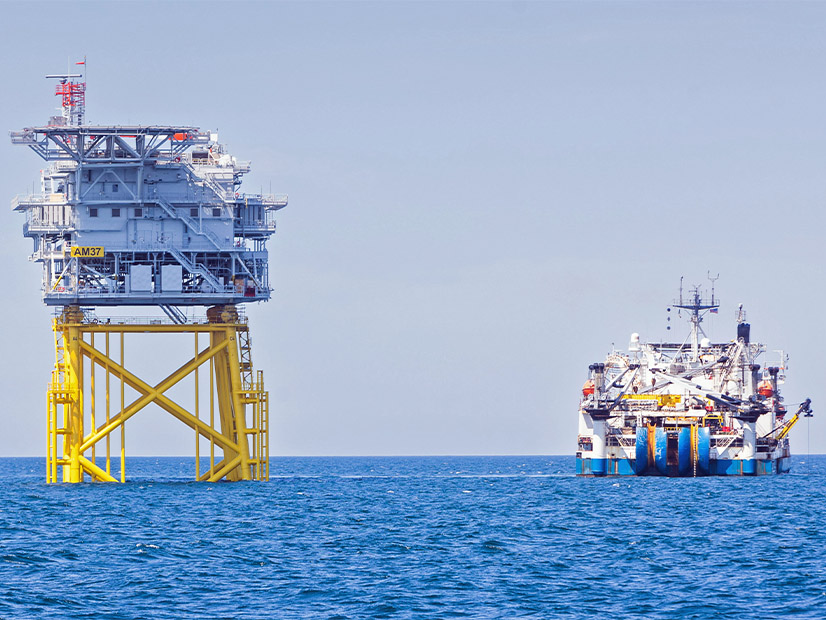With its substation now in place off the Massachusetts coast, Vineyard Wind 1 expects the first electricity to start flowing to land before the end of this year.
Avangrid last week provided an update on the landmark offshore wind project, which has been the subject of years of intensive planning but saw its first “steel in the water” only in June.
Several monopile foundations for turbine towers have been fixed to the ocean floor, and Avangrid announced Thursday that the substation has been placed on its four-pile jacket foundation, roughly a dozen nautical miles south of Martha’s Vineyard.
The Danish-built substation now looms over nearby vessels but soon will be dwarfed by the towers nearby.
It will give up nothing in bulk, however, weighing in at more than 6 million pounds.
Manufacturer Bladt Industries said the combined weight with its foundation is roughly 10.4 million pounds — equal to 2,300 of the Tesla Model Y cars Vineyard Wind 1 eventually will help charge.
Avangrid said in a news release that this is the sixth and largest substation in the fleet installed by parent company Iberdrola, which previously has placed units off the coasts of France, Germany and the United Kingdom.
It also is the first offshore wind substation installed in U.S. waters.
Vineyard Wind 1 and South Fork Wind are racking up a series of firsts in the emerging U.S. offshore wind sector this spring and summer as a flotilla of construction vessels large and small plies the waters south of Massachusetts and Rhode Island.
One of the two will become the first commercial-scale offshore wind farm in the U.S. Or perhaps both will claim the honor with an asterisk — first to produce current and first to reach full power.
South Fork has an edge: It is less than one-fifth the size of Vineyard.
(South Fork’s substation is relatively svelte, at only 3 million pounds — but it was the first offshore substation ever built in the US.)
The two are roughly 30 nautical miles apart in the patch of the Outer Continental Shelf that the Bureau Of Ocean Energy Management has divided into multiple wind leases.
Vineyard, a joint venture of Avangrid Renewables and Copenhagen Infrastructure Partners, will have 62 turbines with a nameplate capacity of 806 MW and will feed into the grid in Massachusetts.
South Fork’s 12 turbines will have a capacity of 132 MW and feed into the New York grid. It is a joint venture between Ørsted, the world’s largest offshore wind developer, and New England utility Eversource, which is looking to sell its share of South Fork and other offshore projects.
Avangrid, Ørsted and other developers have run into major financial problems with other offshore wind projects they are pursuing in the Northeast, because of soaring costs and interest rates.
But Vineyard and South Fork already were far along in the process by the time those costs started rising.




